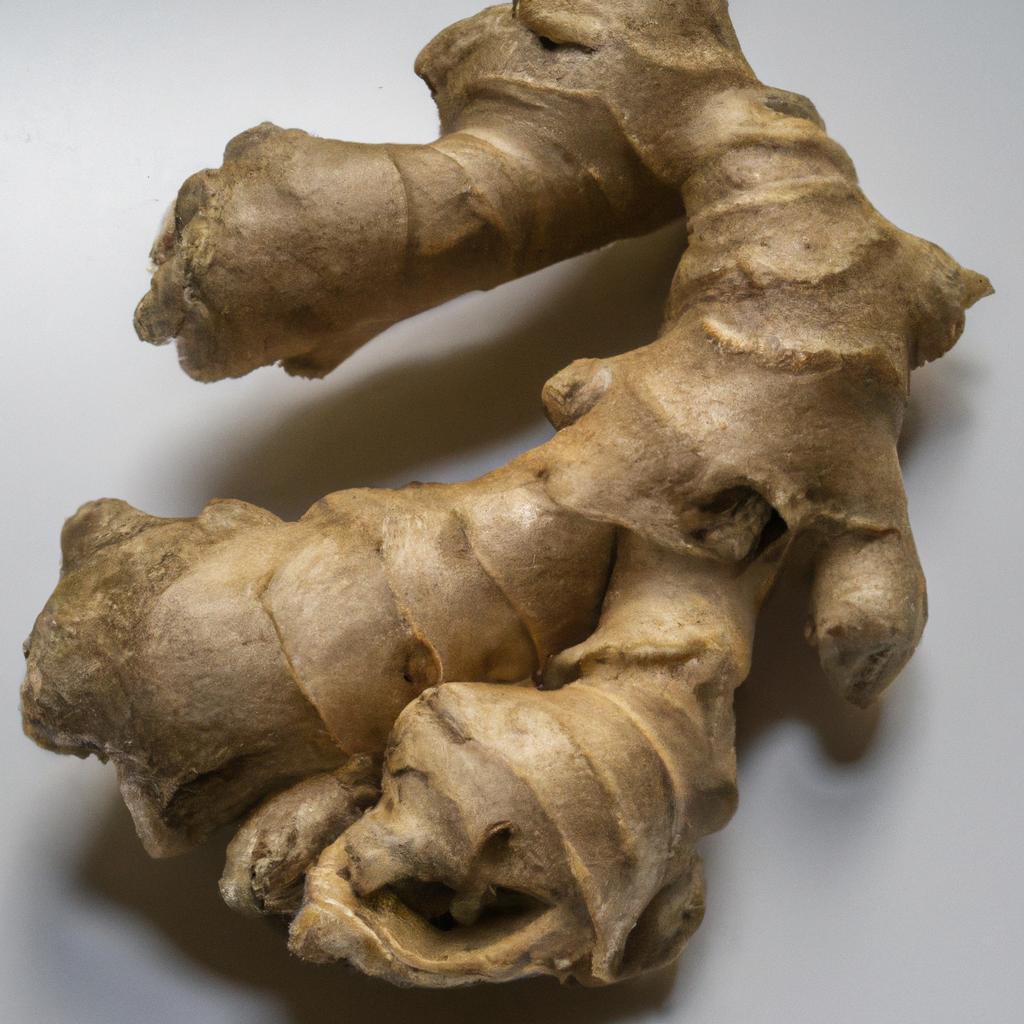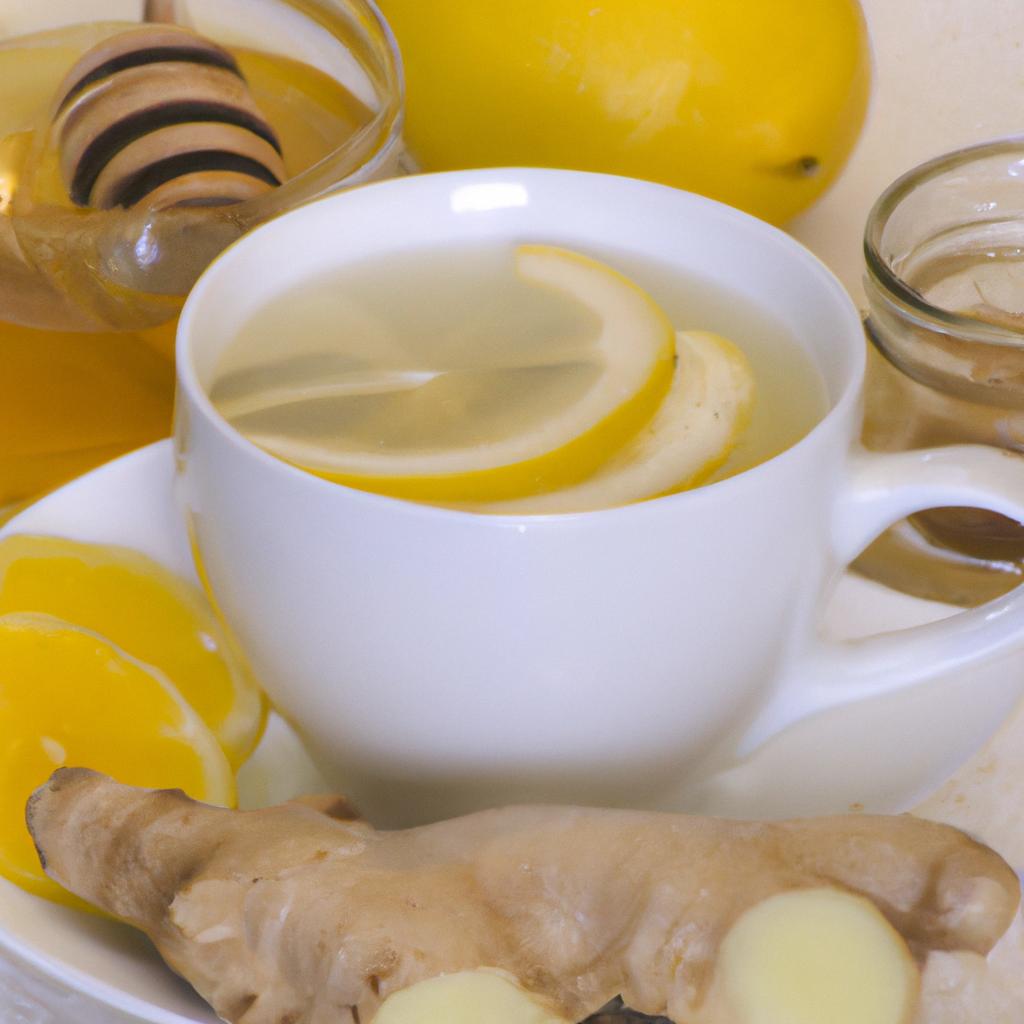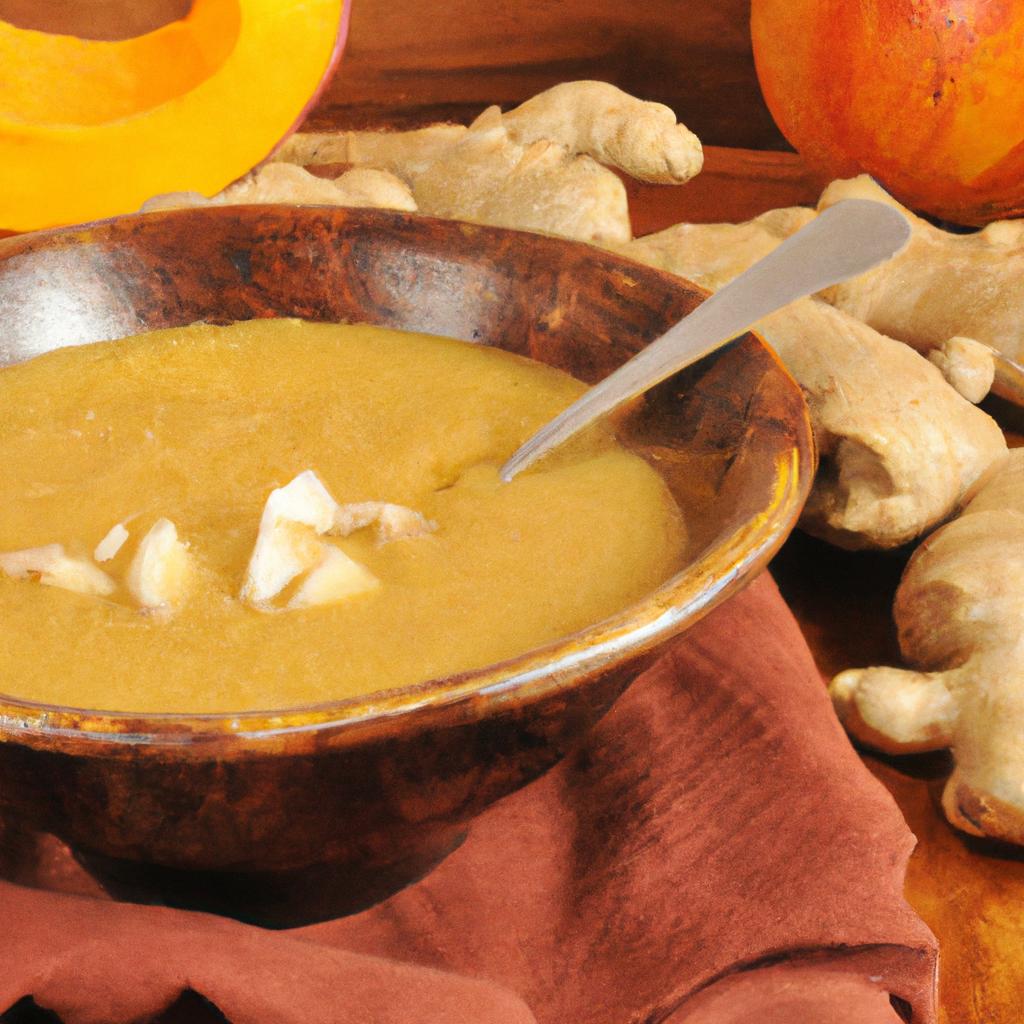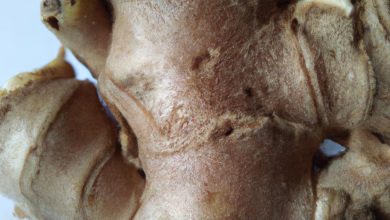Is Ginger Low FODMAP? Exploring the Benefits of Ginger for Digestive Health

If you’re someone who suffers from irritable bowel syndrome (IBS) or digestive issues, you might have heard of the Low FODMAP Diet. This diet involves avoiding certain carbohydrates that can cause digestive issues and instead, consuming foods that are low in FODMAPs. Ginger is a popular spice with many health benefits, but is it low FODMAP?
Ginger is a root that has been used for centuries in traditional medicine to treat various ailments. It has anti-inflammatory properties, helps with nausea and vomiting, and aids digestion. But when it comes to FODMAPs, ginger can be a little tricky. While it’s not high in FODMAPs, it does contain small amounts of fructose, which is a FODMAP. However, the amount of fructose in ginger is so low that it’s unlikely to cause any issues for those following a Low FODMAP Diet.
In fact, ginger has been shown to be beneficial for people with IBS. A study published in the Journal of Alternative and Complementary Medicine found that ginger helped reduce abdominal pain and bloating in people with IBS. Additionally, ginger has been shown to improve gastric emptying and reduce inflammation in the gut.
So, if you’re following a Low FODMAP Diet, you don’t have to worry about avoiding ginger. In fact, incorporating ginger into your diet can have many health benefits. Ginger can be consumed in various forms, such as tea, ginger ale, or even added to your meals. It’s important to note that while ginger is generally safe for most people, it can interact with certain medications, so it’s always best to consult with your healthcare provider before adding it to your diet.
Overall, ginger can be a great addition to a Low FODMAP Diet, and its health benefits make it worth incorporating into your diet even if you don’t suffer from digestive issues. In the following sections, gingerfacts.com will explore the Low FODMAP Diet in more detail, the specifics of ginger’s FODMAP content, and how you can incorporate ginger into your diet.
What is a Low FODMAP Diet?

If you suffer from IBS, you may have heard of the Low FODMAP Diet. FODMAP stands for Fermentable Oligosaccharides, Disaccharides, Monosaccharides, and Polyols. These are short-chain carbohydrates that are not well absorbed in the small intestine and can cause digestive issues in some people.
The Low FODMAP Diet is a diet that involves avoiding foods that are high in FODMAPs and instead consuming foods that are low in FODMAPs. This can help alleviate symptoms such as bloating, abdominal pain, and diarrhea in people with IBS.
Foods to Avoid on a Low FODMAP Diet
Some common foods that are high in FODMAPs and should be avoided on a Low FODMAP Diet include:
- Wheat and other gluten-containing grains
- Dairy products such as milk, cheese, and yogurt
- High-fructose fruits such as apples, pears, and mangoes
- Vegetables such as onions, garlic, and cauliflower
- Legumes such as beans and lentils
- Sweeteners such as honey, agave, and high fructose corn syrup
Foods to Include on a Low FODMAP Diet
While there are many foods that should be avoided on a Low FODMAP Diet, there are also many foods that are low in FODMAPs and can be consumed:
- Proteins such as meat, fish, and poultry
- Gluten-free grains such as rice, quinoa, and oats
- Low-FODMAP fruits such as strawberries, blueberries, and oranges
- Vegetables such as carrots, zucchini, and spinach
- Nuts and seeds such as almonds, peanuts, and pumpkin seeds
- Sweeteners such as maple syrup, stevia, and sugar
It’s important to note that everyone’s tolerance to FODMAPs is different, so some people may be able to tolerate certain high FODMAP foods in small amounts. Working with a registered dietitian who is knowledgeable about the Low FODMAP Diet can help you determine which foods are safe for you to consume.
Is Ginger Low FODMAP?

Explanation of Ginger and its Nutritional Content
Ginger is a flowering plant that is widely used as a spice and for its medicinal properties. It contains various nutrients such as vitamins B6 and C, potassium, and magnesium. Gingerol is the active compound in ginger that gives it its unique flavor and many of its health benefits.
Research Studies on the FODMAP Level of Ginger
While ginger is generally considered low FODMAP, there have been conflicting reports on its FODMAP content. A study published in the Journal of Agricultural and Food Chemistry found that ginger was low in FODMAPs, including fructans and galactooligosaccharides (GOS). However, another study published in the Journal of Gastroenterology and Hepatology found that ginger contained moderate levels of fructose and GOS, which are both FODMAPs.
Despite the conflicting reports, the amount of FODMAPs in ginger is relatively low, and it’s unlikely to cause any issues for those following a Low FODMAP Diet. The Monash University Low FODMAP Diet app lists ginger as a safe food to consume in small amounts.
Ginger’s Place in the Low FODMAP Diet
Ginger can be a great addition to a Low FODMAP Diet. It can help with digestion, reduce inflammation in the gut, and alleviate symptoms of nausea and vomiting. However, it’s important to keep in mind the recommended serving size of ginger for those following a Low FODMAP Diet. The Monash University Low FODMAP Diet app recommends limiting ginger to 1 teaspoon of fresh ginger or 1/2 teaspoon of dried ginger per meal.
When incorporating ginger into your diet, it’s important to pay attention to other ingredients in your meals that may be high in FODMAPs. For example, ginger combined with garlic and onion could potentially increase the FODMAP content of your meal. By being mindful of your ingredients and portion sizes, you can enjoy the many health benefits of ginger while still following a Low FODMAP Diet.
Health Benefits of Ginger

Ginger is not only a delicious and versatile spice, but it also has numerous health benefits. Here are some of the reasons why adding ginger to your diet can be beneficial:
Overview of Ginger’s Health Benefits
Anti-inflammatory properties
Ginger has potent anti-inflammatory properties, which can help reduce inflammation throughout the body. Chronic inflammation has been linked to various health issues, such as heart disease, cancer, and arthritis. Incorporating ginger into your diet can help reduce inflammation and prevent these conditions.
Digestive aid
Ginger has been used for centuries as a digestive aid. It can help relieve nausea, vomiting, and bloating. Ginger has also been shown to improve gastric emptying, which can help reduce symptoms of indigestion.
Immune system booster
Ginger has immune-boosting properties that can help fight off infections and illnesses. Ginger has been shown to have antimicrobial effects against various bacteria and viruses.
Pain relief
Ginger has natural pain-relieving properties that can help alleviate pain throughout the body. Ginger has been shown to be effective in reducing menstrual pain, muscle pain, and osteoarthritis pain.
Explanation of How Ginger Can Help with Digestive Issues
Ginger can be particularly helpful for people with digestive issues. Ginger has been shown to have a carminative effect, meaning it can help reduce gas and bloating in the digestive tract. Additionally, ginger can help reduce inflammation in the gut, which can improve overall digestive health.
If you suffer from digestive issues such as IBS, incorporating ginger into your diet can be especially beneficial. As mentioned earlier, ginger has been shown to help reduce abdominal pain and bloating in people with IBS.
In summary, ginger has numerous health benefits, including its anti-inflammatory properties, ability to aid digestion, immune-boosting effects, and natural pain relief. Incorporating ginger into your diet can be particularly beneficial for people with digestive issues.
How to Incorporate Ginger into Your Low FODMAP Diet
Ginger is a versatile spice that can be incorporated into your diet in various ways. Here are some ways to include ginger in your Low FODMAP Diet:
Different Ways to Consume Ginger
- Ginger tea: Adding a few slices of fresh ginger to hot water and steeping it for a few minutes is an easy and delicious way to consume ginger.
- Ginger ale: Look for ginger ale that contains real ginger and has no high-fructose corn syrup.
- Ginger shots: These are concentrated doses of ginger that can be purchased at health food stores or made at home by blending fresh ginger with water.
- Added to meals: Grated ginger can be added to stir-fries, soups, and curries to add flavor and health benefits.
Recommended Serving Size of Ginger for Low FODMAP Diet
According to Monash University, a Low FODMAP serving size of ginger is up to 1 tablespoon of fresh ginger or 6 pieces of crystallized ginger. However, it’s important to keep in mind that everyone’s tolerance to FODMAPs is different, so you may need to experiment with the amount of ginger that works best for you.
Ginger Recipes for Low FODMAP Diet
Here are some delicious Low FODMAP recipes that incorporate ginger:
- Carrot and Ginger Soup: This warming soup is perfect for a cold day and is made with carrots, ginger, and coconut milk.
- Ginger and Turmeric Rice: This flavorful rice dish is made with fresh ginger, turmeric, and cilantro.
- Ginger Chicken Stir-Fry: This stir-fry is loaded with vegetables and protein and is made with fresh ginger, soy sauce, and sesame oil.
Incorporating ginger into your Low FODMAP Diet can be easy and delicious. By trying out different recipes and incorporating ginger into your meals, you can reap the health benefits of this powerful spice.
Conclusion
In conclusion, ginger is a powerhouse root with numerous health benefits, and it can be safely incorporated into a Low FODMAP Diet. While ginger does contain a small amount of fructose, it’s unlikely to cause any issues for those following a Low FODMAP Diet. In fact, ginger has been shown to improve digestion, reduce inflammation in the gut, and alleviate symptoms of IBS.
If you’re following a Low FODMAP Diet, you don’t have to worry about avoiding ginger. Instead, try incorporating it into your diet in various forms, such as tea, ginger ale, or even added to your meals. However, it’s essential to pay attention to the serving size, as consuming large amounts of ginger can cause digestive discomfort.
At gingerfacts.com, we believe in the power of natural remedies, and ginger is undoubtedly one of them. With its anti-inflammatory properties, ginger has been used for centuries to treat various ailments and promote overall health. Whether you’re following a Low FODMAP Diet or not, adding ginger to your diet is a smart choice for anyone looking to improve their digestive health.
Conclusion: So above is the Is Ginger Low FODMAP? Exploring the Benefits of Ginger for Digestive Health article. Hopefully with this article you can help you in life, always follow and read our good articles on the website: gingerfacts.com




